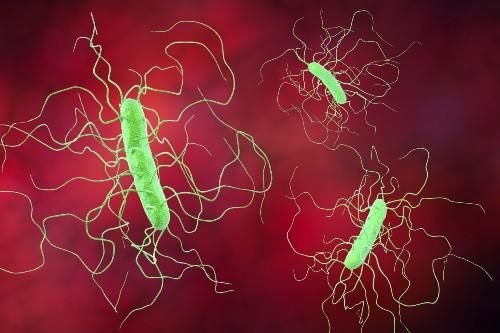Metabolic Network Analysis Helps Clarify Drivers of Virulence in C Difficile
The technology platform could speed up the development of novel therapeutics to combat virulence.

A new report suggests that the virulence of Clostridioides difficile (Cdiff) may be associated with distinct metabolic signals, opening up potential new therapeutic targets to fight the infection.
The report, published in the journal mSystems, is based on an analysis of Genome-Scale Metabolic Network Reconstructions, also known as GENREs, which the authors argue could be an important new method for finding treatments for pathogens like C difficile.
Corresponding author Jason A. Papin, PhD, of the University of Virginia, and colleagues, wrote that one of the reasons C difficile infection can be so problematic is that patients are often exposed to the bacterium in hospital settings and after already receiving antibiotics.
“While these drugs are lifesaving, they also diminish the abundance of other bacteria in the microbiota, altering the metabolic environment of the gut and leaving it susceptible to colonization by C difficile,” the authors wrote.
Papin and colleagues said they recently observed that C difficile adapts transcription of catabolic pathways to match conditions in susceptible gut environments.
“These transcriptional shifts indicated that C difficile must coordinate metabolic activity accordingly to compete within new hosts,” they explained.
Even with the shifts, however, the investigators said certain elements of C difficile metabolism appear to remain the same across different environments. Among those “core” elements are carbohydrate and amino acid fermentation. Moreover, the authors said specific growth nutrients are known to affect the virulence of genes in C difficile, which opens up the possibility of targeted therapeutic strategies that could alter active metabolism to downregulate C difficile virulence without the need for additional antibiotics.
“This form of treatment would be especially beneficial as there have been stark increases in the prevalence of antibiotic resistance and hypervirulence among C difficile clinical isolates,” Papin and colleagues said.
That’s where GENREs come into play. These reconstructions mimic the metabolic reactions encoded in organisms such as C difficile, but they do so within the confines of known biological and physical parameters. GENREs have already been used successfully in genetic engineering contexts, and to better understand a handful of other pathogens, the investigators said. However, they added that the platforms have so far not been used extensively to study virulence and colonization in pathogens like C difficile.
The authors decided to generate GENREs for two strains of C difficile, one extensively studied laboratory strain and one recently characterized hypervirulent isolate.
“In silico validation of both GENREs revealed high degrees of agreement with experimental gene essentiality and carbon source utilization data sets,” Papin and colleagues said.
They further found consistent metabolism patterns that appeared to correspond with increases in virulence.
“Our results support that differential C difficile virulence is associated with distinct metabolic programs related to use of carbon sources and provide a platform for identification of novel therapeutic targets,” they wrote.
Papin and colleagues said metabolic network reconstructions of this type can ultimately be used to more rapidly develop targeted therapies, enabling a personalized approach to constraining C difficile virulence. They said the GENRE technology has so far been under-exploited, but they said it does not need to stay that way.
“Overall, GENREs have had limited impact to date in real mechanistic understanding of infectious disease, and the current study represents a significant advance in this application,” they concluded.
